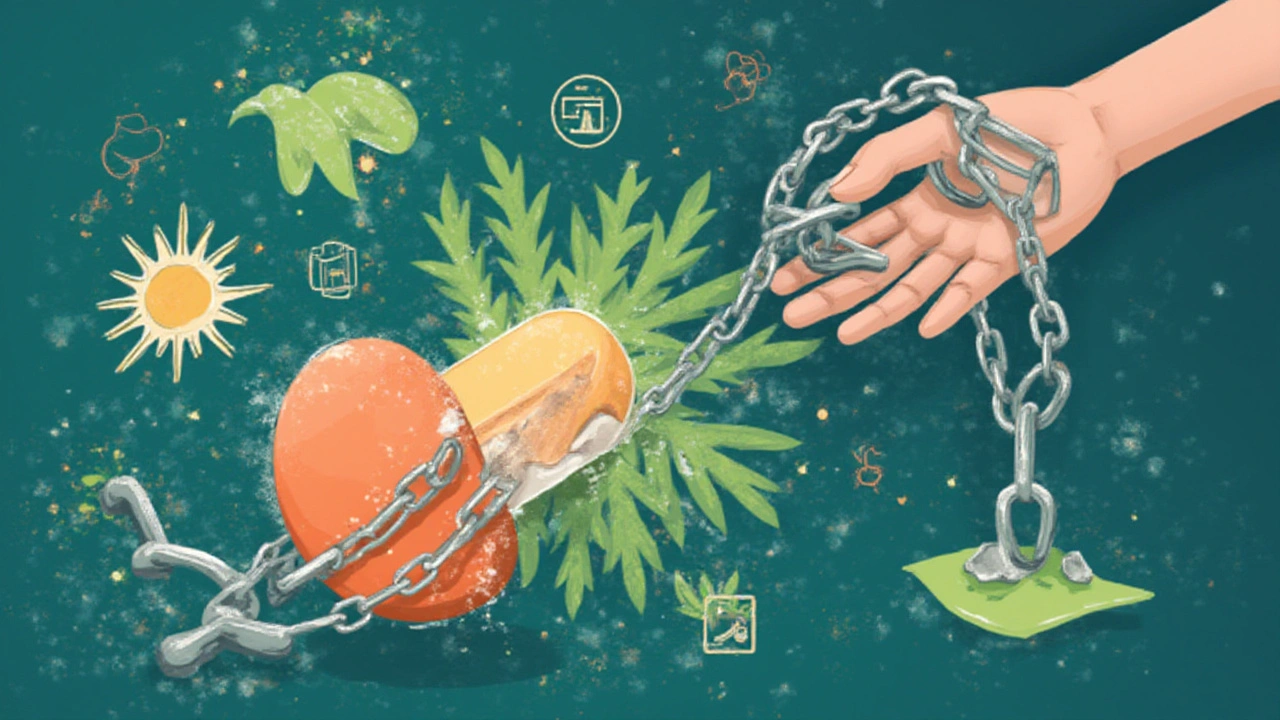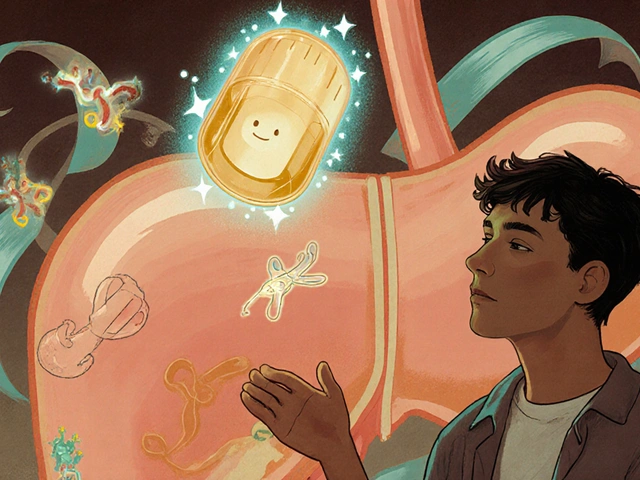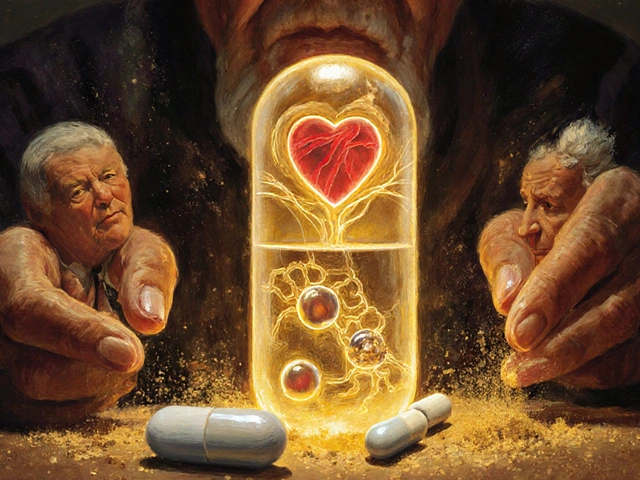Methocarbamol sits quietly in many medicine cabinets, promising relief for aching backs and tense muscles. Yet, very few people stop to wonder—what actually happens if you start reaching for those tablets day after day, week after week? In the world of muscle relaxants, methocarbamol is seen as the well-behaved cousin, preferred partly because it’s not a narcotic and supposedly less habit-forming. But is that the full story when it comes to long-term use?
Unpacking the Long-Term Use and Dependency Question
Let’s get right to the stuff most people worry about first: can you really get hooked on methocarbamol? And if not "hooked" in the dramatic sense, is there a subtler risk of depending on it for comfort, physically or mentally? Methocarbamol’s claim to fame is mainly helping with short-term, acute pain—think muscle strains, nasty back spasms, maybe a pulled neck muscle from an awkward night’s sleep. Doctors like it partly because, compared to opioids or benzodiazepines, methocarbamol usually doesn’t bring the euphoria or the cravings that often create addiction.
But here’s where things get slippery: dependency isn’t always black and white. Even with methocarbamol, some people report feeling like they “need” it to get through their day or simply to fall asleep. And let’s be frank—pain is stressful, and a pill that takes the edge off can turn into a daily emotional crutch. Physical dependency, where your body starts to expect the drug and maybe you get headaches, anxiety, or muscle twitches if you don’t take it, isn’t well documented with methocarbamol but can sometimes happen, especially in people using it for many months or at high doses.
One wild fact: There isn’t a mountain of data on people using methocarbamol for longer than a few weeks. Most official recommendations say try not to use it beyond two or three weeks. If doctors see someone coming back for more refills month after month, they’ll usually start to ask questions. This gap in evidence isn’t just an academic thing—it means there’s a lot we don’t know about the long-haul risks.
Add to that the stories of people who’ve stopped suddenly and faced headaches, anxiety, or rebound pain. While these aren’t classic withdrawal symptoms, they’re enough to raise an eyebrow. Maybe methocarbamol isn’t nearly as risky as opioids or benzodiazepines in terms of dependence, but it isn’t totally off the hook either, especially when used in the long term or by those with a history of substance issues.
Interestingly, a review from 2024 hinted at the way even weak muscle relaxants can sneak into daily routines, with patients asking for refills just to maintain the normalcy they feel, not because their pain got worse. The line between physical and psychological dependency fades fast when pain is involved.

What About Tolerance—Does the Effect Wear Off?
Tolerance is the sneaky cousin of dependency—your brain and body basically get used to a drug, so you need more of it to feel the same punch. With methocarbamol, doctors haven’t noticed a skyrocketing risk for tolerance at the doses usually prescribed. But that’s not to say it never happens. For folks using methocarbamol daily for months, especially those with stubborn pain that just won’t quit, reports of fading effects or the urge to take higher doses aren’t uncommon.
This is partly because your nervous system is pretty adaptive. When it gets a daily dose of a muscle relaxant, it tries to restore balance in the background—sometimes by ramping up the signals the drug was supposed to block. A few people on online forums have swapped stories about their first doses rocking their world, then barely making a dent weeks later. It’s not nearly as dramatic as with opioids, but it’s still worth keeping in mind, especially if you feel like you’re chasing that original relief.
Another important angle: the older you get, or if you pile on other meds (for depression, allergies, or anxiety, for example), the more complicated things become. Sometimes, the sleepy, dizzy feelings—those "side effects" many notice on day one—get less obvious, but the risk for falls or confusion can go up as you or your loved ones age.
Unlike other muscle relaxants, methocarbamol rarely gets mentioned in the context of abuse, but there have been a few rare cases in medical literature. Usually, these involve much higher doses than a doctor would recommend, sometimes mixed with alcohol or other drugs. So if you find you’re running out of tablets faster than you used to, or you’re tempted to mix and match meds, it’s time for an honest conversation with a doctor.
If you’re reading this and feeling uneasy about your own or a loved one’s methocarbamol use, there are some easy checkpoints:
- Are you using it almost every day without planning to stop?
- Do you get anxious or uncomfortable if you miss a dose?
- Has the original effect faded, but you keep taking it anyway?
- Do you need a higher dose than before for the same relief?
Answering yes to these doesn’t mean you’re “addicted,” but it’s a nudge to rethink your plan.

Beyond Methocarbamol: Tackling Chronic Pain with Alternatives
So what if the aches won’t quit, and you’ve hit a wall with methocarbamol? This is where the toolbox of *chronic pain management* really widens. First, let’s clear something up: methocarbamol was designed for short bursts—like when you lift something too heavy and your lower back locks up. If you’re still reaching for the bottle after many weeks, the problem probably goes deeper than just muscle spasms.
Doctors and pain specialists usually talk about a “stepwise” approach to chronic pain. The first step isn’t another pill—it’s about figuring out the root of the pain and looking for non-drug ways that work long-term and don’t leave you wondering about dependency or tolerance. Exercise, stretching, and physical therapy can feel daunting when you hurt, but even gentle movement or water therapy can help keep muscles supple and pain signals under control.
Then there’s the tech side—TENS machines (those little gadgets that zap muscles with electricity) or ultrasound therapy have picked up a lot of fans, and insurance often covers them if you have a doc’s note. For chronic back pain specifically, big studies in 2023 showed that a combo of movement therapy and mindfulness-based stress reduction outperformed muscle relaxants after three months.
Other options include:
- Acupuncture, which is now officially recommended by some pain groups for chronic lower back pain, with clinical trials showing up to 40% reduction in pain scores compared to usual care.
- Cognitive-behavioral therapy (CBT) for pain, which might sound unconventional but tackles the mental spiral that chronic pain often triggers. Real-world numbers? One series of clinics in the UK found that seven out of ten people using CBT and exercise reported greater improvements than those just using medications.
- Injection therapies—like trigger point injections or even Botox for severe cases—though these come with their own risks and usually aren’t used forever.
- Prescription alternatives like baclofen, tizanidine, or even low-dose antidepressants—though these have their baggage of side effects and tolerance issues, too.
One thing you won’t hear often: sometimes doctors encourage a “medication holiday” or a supervised pause in muscle relaxant use. This can actually reset some of your brain’s response, so the medicine works better if you really need it later. And a break gives you a chance to see if the ache is still there or if your body’s learned to work around it.
For anyone considering their options beyond methocarbamol, it helps to read real stories and scientific summaries. For instance, this deep-dive on methocarbamol back pain discusses effectiveness and tips for managing acute flare-ups—the place where methocarbamol really shines.
Nobody wants to depend on a daily pill, especially if there’s any hint of tolerance or a creeping need for higher doses. With muscle relaxants, it’s smart to keep the smallest effective dose and take regular breaks, surrounded by a strong mix of movement, mind-body approaches, and, if needed, other medications with different mechanisms.
If you’re still satisfied with the relief methocarbamol brings for now, that’s great—just don’t let comfort slip into habit without checking in on your pain story as it changes. And if you’re in the transition to new therapies, finding a doctor who gets modern pain management (not just quick scripts) makes all the difference.






Dominic Fuchs
So methocarbamol’s the new coffee for back pain folks huh
One pill to make the ache go away and suddenly your whole identity is ‘person who takes muscle relaxants’
Guess we’re just outsourcing our discomfort to chemistry now
Next thing you know we’ll be prescribing vibes
And calling it physical therapy
Leigh Guerra-Paz
I just want to say how much I appreciate this post-it’s so easy to get stuck in the ‘just one more pill’ loop, especially when you’re in pain every single day and no one else understands how exhausting that is
But you’re right-there’s so much more to healing than meds, and I’ve been trying yoga and acupuncture for the last 6 months, and honestly? My back feels like it’s finally learning how to breathe again
It’s not magic, but it’s real, and it’s worth the effort
Also, please don’t underestimate how much rest and good sleep matter-your body heals when you’re not running on caffeine and desperation
Asbury (Ash) Taylor
As someone who’s been managing chronic lower back pain for over a decade, I’ve tried everything from chiropractors to electric blankets
Let me tell you-methocarbamol was my crutch for years, until I realized I was using it to avoid dealing with the root cause
Physical therapy, daily stretching, and learning to breathe through pain changed everything
It’s not glamorous, but it’s sustainable
And yes, I still keep a few pills around for flare-ups-but now they’re a backup, not a first resort
Kenneth Lewis
lol i took this stuff for a week after i pulled my back moving a fridge and now i cant stop thinking about it like its my best friend
not addicted just... emotionally attached??
also i think i spelled methocarbamol wrong in my notes lol
Jim Daly
THIS IS WHY AMERICA IS DOOMED
You people are scared of pain so you pop pills like candy
Back in my day we walked 10 miles uphill both ways and called it character building
Now we want a pill to make the ache go away and call it ‘self care’
PATHETIC
Tionne Myles-Smith
Hey I just wanted to say-you’re not alone if you’ve been relying on this stuff
I was too, for almost a year, until I started seeing a pain psychologist and it changed everything
It’s not weakness to need help-it’s bravery to ask for it
And if you’re reading this and thinking ‘I can’t do therapy’-try one session. Just one. You might be surprised
You deserve to feel better without depending on a pill to get through the day
Jordyn Holland
How quaint. A post about methocarbamol as if it’s some mysterious villain
Let me guess-you’re one of those people who thinks ‘natural remedies’ are magic and pharmaceuticals are evil
Wake up. Pain is biological. The body doesn’t care if your yoga mat is organic or if your therapist has a ‘soulful vibe’
Medications exist because they work-sometimes better than your ‘mindfulness’ and ‘breathwork’
Stop romanticizing suffering and acknowledge that science has given us tools to manage it
Jasper Arboladura
There is a severe lack of longitudinal pharmacokinetic data on methocarbamol in chronic pain populations, which renders most anecdotal claims about dependency speculative at best
Furthermore, the 2024 review referenced is a narrative synthesis-not a meta-analysis-and should be treated with appropriate scientific caution
Additionally, the assertion that ‘rebound pain’ constitutes withdrawal is clinically inaccurate; true withdrawal syndromes require receptor downregulation and neuroadaptive changes, which have not been demonstrated with methocarbamol
One must distinguish between psychological reliance and physiological dependence, a distinction this article blurs dangerously
Jerrod Davis
Given the lack of robust clinical evidence supporting long-term methocarbamol use, and the absence of FDA-approved indications beyond three weeks, it is irresponsible to imply that dependency is a common or even probable outcome.
The article conflates subjective discomfort with objective physiological dependence, which is a significant methodological flaw.
Furthermore, the suggestion that patients should pursue acupuncture and CBT as primary interventions without addressing underlying biomechanical pathology is clinically unsound.
One cannot substitute evidence-based pharmacology with anecdotal wellness trends and expect meaningful outcomes.
As a medical professional, I find this piece dangerously misleading.
It risks encouraging patients to discontinue effective, low-risk therapies in favor of unproven alternatives.
There is a difference between cautious use and dependence.
And there is a difference between informed prescribing and fearmongering.
This article does not distinguish between the two.
It is not the medication that is the problem-it is the lack of proper clinical context.
And yet, here we are, reading a Reddit post that treats pharmacology like a morality tale.
What we need is better education-not fear.
And certainly not pseudoscientific narratives disguised as patient advocacy.
It’s time we stop treating pain management like a TikTok trend.
Joanne Beriña
Who wrote this? Some liberal hippie with a yoga mat and a PhD in ‘feeling things’?
Back in my day, we didn’t need CBT or acupuncture-we had grit and a good hard job
Now we’re told to ‘listen to our bodies’ instead of just pushing through
And don’t even get me started on that ‘medication holiday’ nonsense-what is this, a detox retreat at a spa?
Real Americans don’t quit pills, they just take them right
And if you can’t handle a little muscle ache, maybe you should stop lifting your own groceries
This country is falling apart because we’re too soft to feel pain